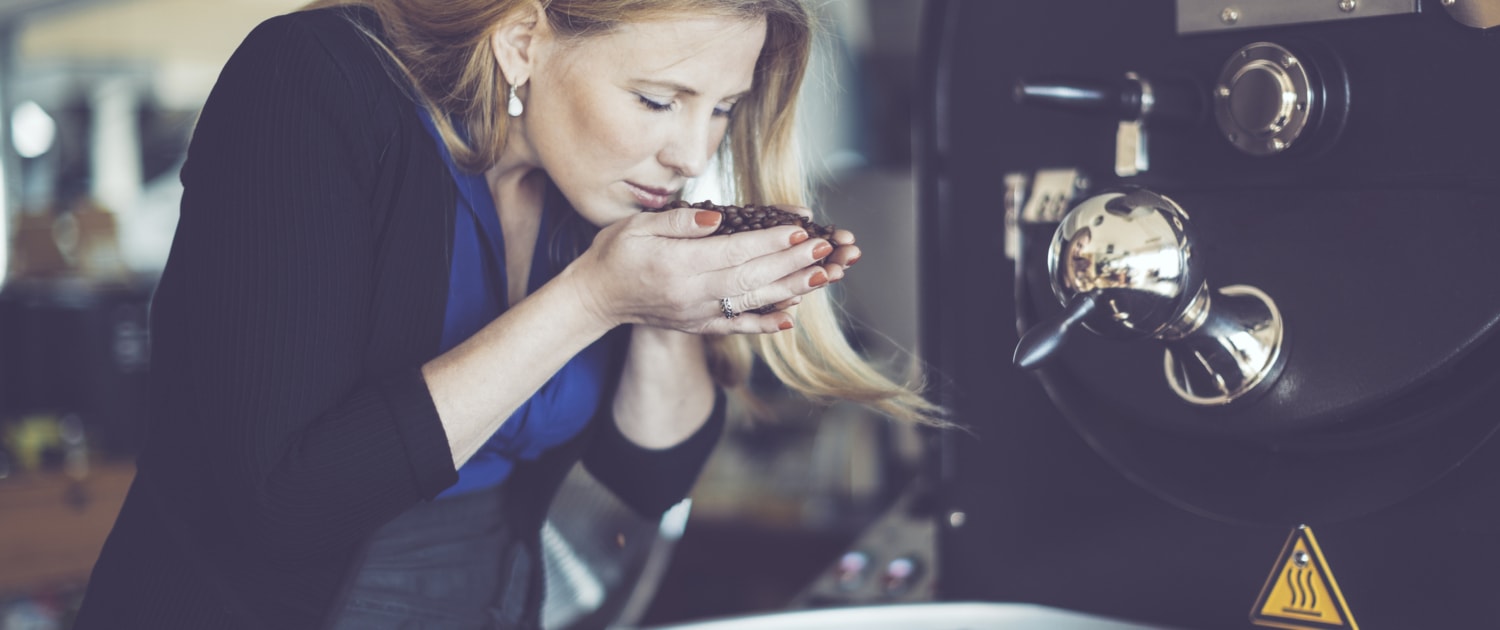What is Coffee Roasting?
– Everything You Need to Know –
We all love coffee.
Many coffee drinkers rely on the dark energizing beverage on a daily basis.
Coffee does not only come in a lot of delicious versions. The beverage also provides us with a much appreciated caffeine boost and a variety of great health benefits.
Some coffee enthusiasts even say that coffee makes them happier and therefore live longer.
But, before the coffee beans have finally reached our morning cup. They already had a long journey behind them.
One of the most important processing stages in the life circle of a coffee bean is surely the process of coffee roasting.
In essence, you are ultimately developing the characteristic coffee flavor through coffee roasting.
That is why many coffee lovers and baristas never get tired of wanting to know more about it.
How are we able to achieve the best tasting coffee? What does actually happen during the process of coffee roasting?
Here is everything you need to know.
Why is roasting important for coffee?
Naturally, coffee beans are the seeds that are maturing in the coffee cherry.
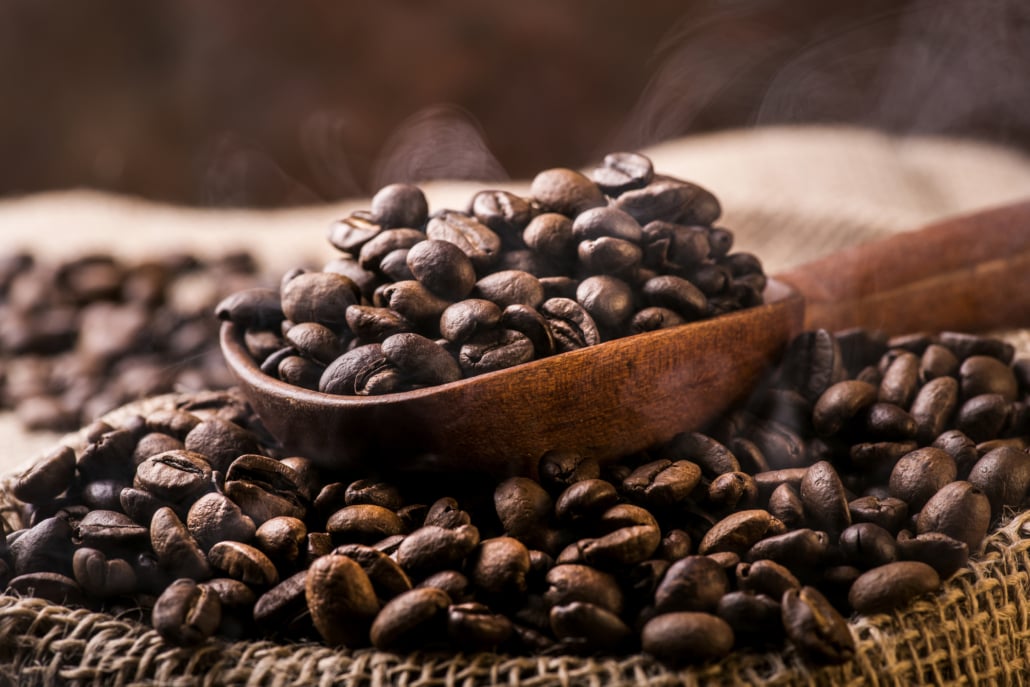
After, they are being processed and dried to the coffee beans as we usually know them. However, at this stage the beans are still green in color. And, they still have a rather beany and grassy aroma.
Actually, these green coffee beans don’t smell like regular coffee at all.
This is why the process of roasting is important for our coffee. Coffee roasting helps developing an incredible amount of 800 to 1000 different aroma compounds.
Essentially, these aroma compounds will give our coffee the various flavor profiles we all enjoy so much.
Over time, coffee roasting has become a real profession with many details and skill sets, which are further diversifying the entire process.
In fact, with so-called professional roast profiling, you are able to affect the existence of these aroma compounds in coffee.
Plus, skilled roast masters can also use the knowledge to exactly determine the actual flavor of a specific coffee type and roast level.
What is the Process of Coffee Roasting?
In general, coffee roasting means transforming coffee beans from green to brown.
It is the process of heating the coffee cherry seeds to eventually augment aroma and flavor. Overall, there are various ways to roast coffee beans. And, any of these ways will affect the final coffee flavor differently.
Ultimately, coffee roasting will also increase the solubility of the roasted coffee beans.
Why is it important talking about solubility?
Because it is surely the essential part of coffee brewing. Green coffee beans cannot really dissolve in water. Hence, we roast them to brown in order to better extract flavors.
Technically speaking, the rate of soluble compounds in a specific roast level is crucial when achieving the right flavor extraction through temperature, time and grind size.
Commonly, you can use several tools or items to roast coffee.
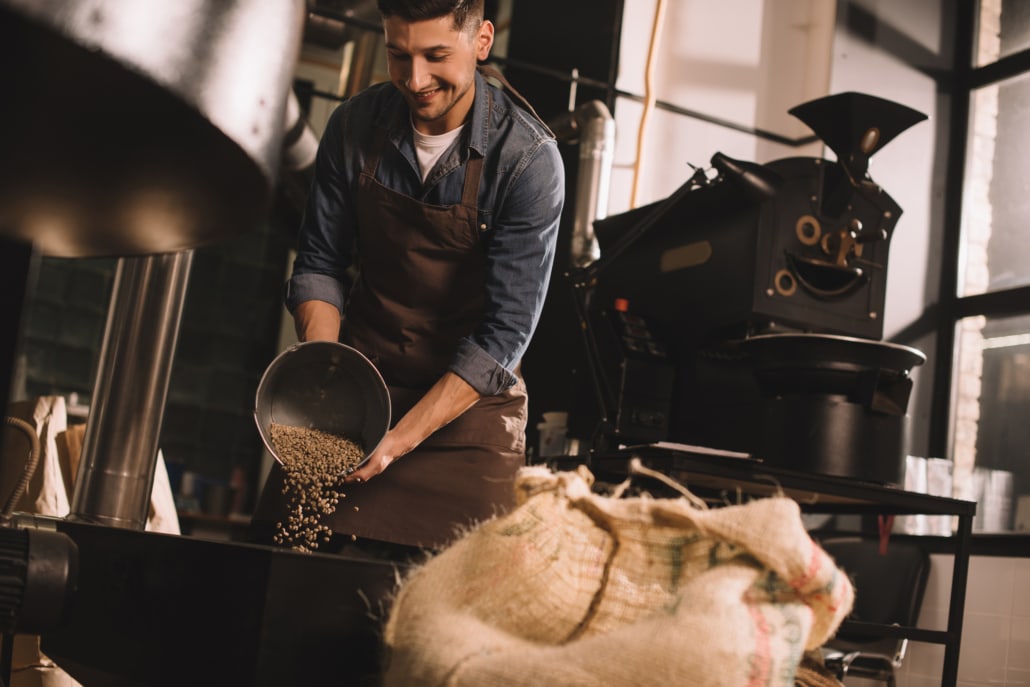
Professional roast masters typically use commercial drum roasters. These are big, cylindrical machines which turn while drying and applying heat from underneath the same time.
However, any of us can actually roast coffee.
A regular iron pan in your kitchen or a popcorn popper can also be used for coffee roasting. But, the quality will probably be different compared to commercial roasting.
The Coffee Taster’s Flavor Wheel
In order to better determine each individual’s coffee flavor profile and roast level, several coffee experts have created the coffee tasting wheel.
It helps us to easier identify and label specific aroma and taste characteristics.
As you can see, the right side shows the gradual progression and development of flavor compounds. The development goes from lighter to darker roasts.
Typically, lighter roasts feature more of the acidic qualities in coffee. For example, citrus, malic acid and apple flavors are very common ones.
Medium roasts rather highlight more nutty and chocolatey qualities. Whereas, darker roasts will eventually give your coffee beans ashy or smoky qualities.
You can read more about coffee roast levels in this article.
Coffee Roasting Stages
Overall, we are commonly talking of three main stages when it comes to roasting coffee.
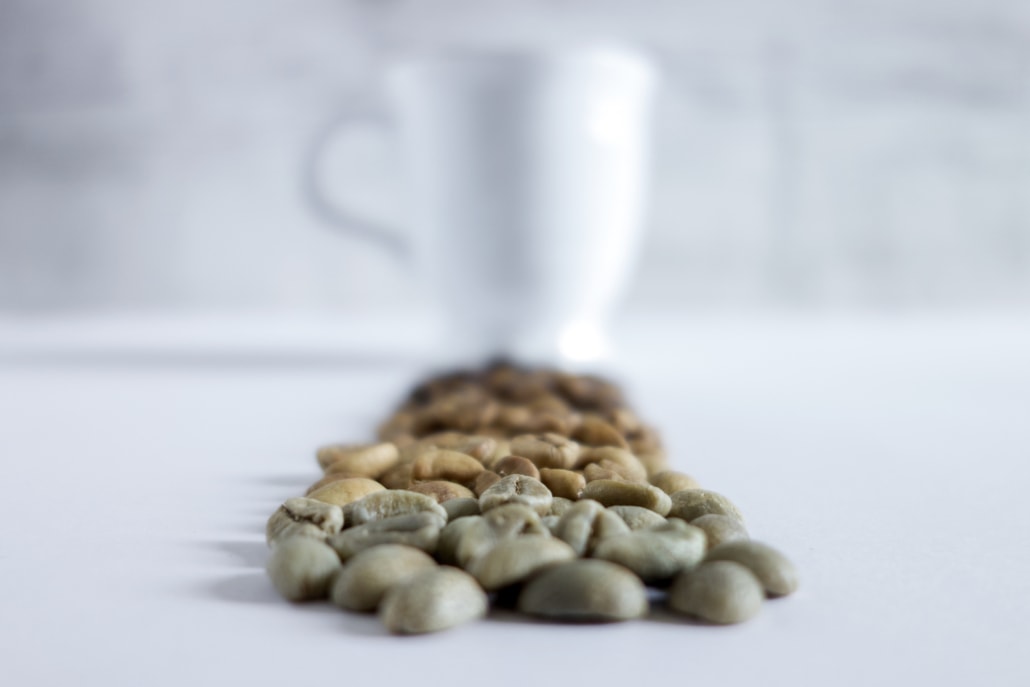
These would be the drying stage, browning stage and the actual development or roasting stage. In addition, there are also two further sub-stages, which we will also shortly highlight.
-
Drying or Yellowing Stage
Coffee experts typically describe the drying stage as a very crucial one.
Because it literally sets the flavor tone and foundation for all of the following stages after. It is the stage that will eventually determine the overall batch time or best coffee amount we are using.
This is because the batch time is directly influenced by the initial moisture content of our chosen coffee beans.
From it, we can learn how hard or soft, fast or slow our roast will have to happen. And, when our roast will lead to the stages of ‘first crack’ and beyond.
Generally, coffee beans naturally have a humidity level of between 8 to 12% of their total body mass.
It is important that we are drying them before the actual roast is starting.
On average, a typical drying stage takes 4 to 8 minutes with a traditional drum roaster. The eventual temperature is commonly going all the way up to 160 degrees of Celcius.
When we are using drum roasters, we need to be especially careful. Ideally, we don’t want to burn our beans by applying too much heat right at the start.
In addition, the drying stage itself is also important for another reason.
It also allows the coffee beans to collect more energy. This point is quite important as well. Because this extra energy will still be needed during the entire coffee roasting process later on.
During the last stage of roasting, it will find its purpose. The actual development or roasting stage will be exothermic, meaning it is heat producing.
-
Browning Stage or ‘Maillard Reaction’
During the second stage, our coffee beans will become brown in color.
From 160 degrees and beyond, our coffee is beginning to smell like toasted bread and hay.
It is during this stage that the aroma precursors are actively converting to aroma compounds.
Plus and even if the browning stage is after the initial drying stage. Some further drying will still continue within our beans during the browning stage as well.
Additionally, the so-called ‘Maillard Reaction’ is starting during the browning stage, too.
Basically, it describes and is responsible for the browning of our coffee beans. This is happening by reducing sugars and amino acids that are reacting with one another.
Eventually, this is leading to literally making hundreds of different aroma and color compounds, which you may better know as melanoids.
Furthermore, the browning stage is also the phase when the entire coffee roasting process is naturally slowing down.
Some roast masters may even want this. Hence, they will further actively support this slowing down process in order to ensure proper flavor development.
At the end of the browning stage, our coffee will start to pop.
We are calling this the ‘first crack’, which automatically leads us to the beginning of the development stage.
-
Development Stage or ‘First Crack’
The final phase of our three main stages is where the roasting process and reaction becomes exothermic. As a result, our coffee is cracking.
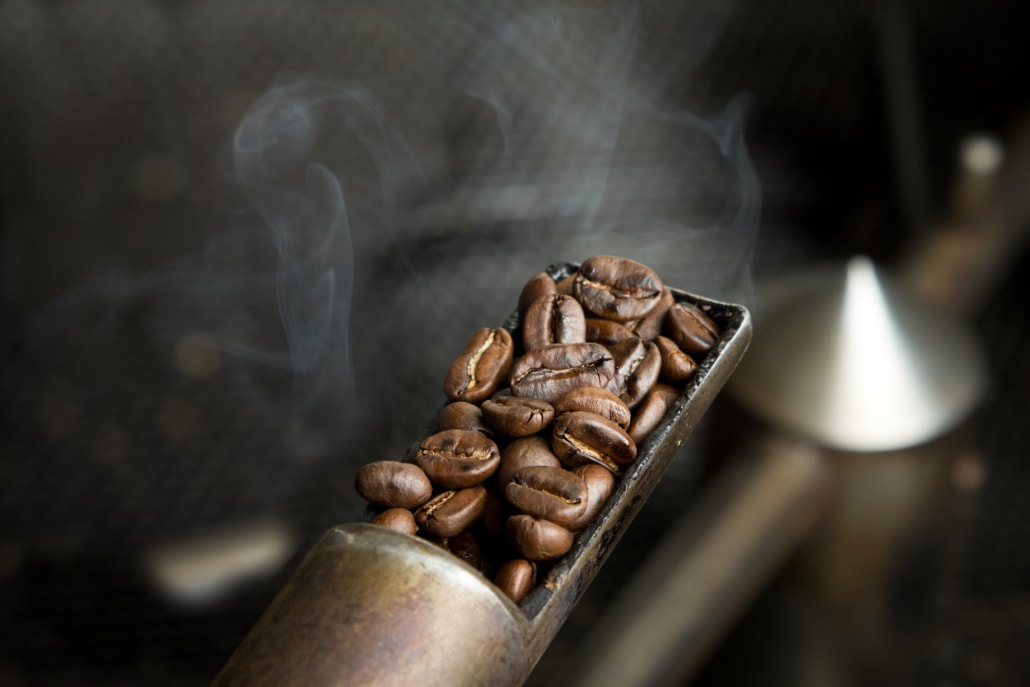
Previous to this, our beans were constantly building up pressure within themselves, due to the permanent drying or moisture evaporation before.
With the built up of pressure and heat inside the beans, they will eventually begin to break down from the inside out.
You can literally hear the sound of cracking. Some people like to describe it as ‘popcorn popping’.
It is during the development stage when our wanted aroma compounds are developing.
Again, we should better and carefully slow down the roasting process here. Otherwise, our coffee may easily end up tasting smoky. And then, the overall flavor may be too sharp.
Typically, the development stage takes time of about 15 to 25% of the entire coffee roasting process.
Of course, the specific time period will depend on the particular flavor profile and roast degree we are looking for.
-
‘Second Crack’
Besides the three main stages, some coffee experts also mention two additional ones.
If you are roasting your coffee beans long enough, a ‘second crack’ will eventually occur. This is already near the full breakdown of the coffee.
The actual sound will be slightly softer compared to the ‘first crack’.
At this stage, the coffee bean oils will usually migrate and leave from the inside of the bean to the outside.
Technically speaking, the cellular matrix is actually fracturing or breaking here. This allows the oils to migrate outward.
Some coffee roasters like to roast all the way to the point of ‘second crack’. For them, it serves as a good marker and useful indicator.
Because, it marks the point at which the roast flavors can eventually dominate and overcome the actual and original coffee bean flavors.
Many roast masters like to keep a nice balance between the first and second crack though. So, both the natural and roasted flavor profiles can show through together and more harmoniously.
But at the end of the day, it all depends on us and what kind of coffee flavor we are preferring. There is no real right or wrong way or answer.
-
‘Carbonization’
Now, we are getting to the full breakdown of our coffee.
Our coffee beans will literally start burning at this stage. As a result, carbon is developing as sugars and other components are breaking down and burning.
Most roasters will not go this far. Because, most of the coffee flavor will be gone by now.
Roast Degree or Levels
Traditionally, roasters mostly roast coffee based both on the sounds and smells of the above phases we have just been talking about.
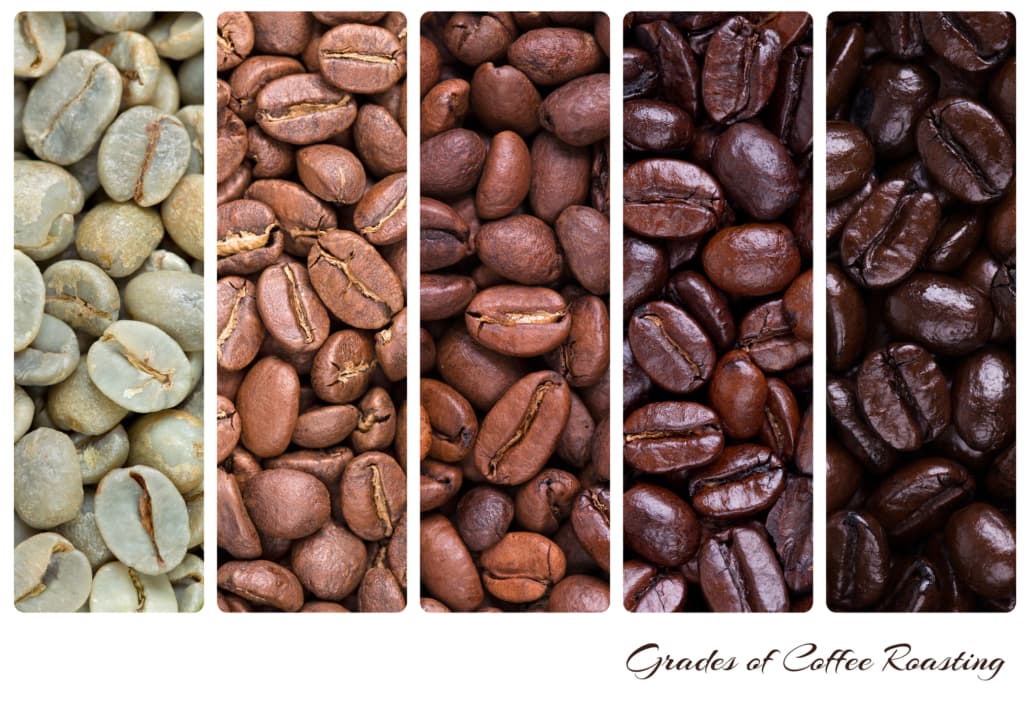
However and nowadays, many professionals try to become even more advanced.
Their goal is to produce reliability between the various batches. Furthermore, this helps them to better guarantee and continuously repeat the same flavor profile.
That is why most commercial roaster machines are equipped with automatic features to repeat specific roast profiles.
Roast levels can reach certain degrees.
Common categories and names for roast levels are ‘light brown’, ‘medium brown’, ‘medium-dark’, ‘dark brown’, ‘very dark brown’, and ‘black-brown’.
In general, the roast degree is one of the most important indicators with the roast. Commonly, you can either measure it by these examples of color meter or by actual tasting.
Usually, roasters want to actively enhance or ‘improve’ the natural coffee’s own flavor. This is happening by deliberately deciding the specific roast degree.
Typically, ‘light roasts’ are more acidic. And, ‘dark roasts’ are more bitter.
In addition, fruity flavors are more common on light roasted coffee. And, roasty and burnt flavors are more the case in dark roasts.
The reason why light roasts are more fruity is because of containing high amounts of an organic compound, called 5-hydroxymethylfurfural.
Moreover, when you are continuing to roast your beans darker and darker, this compound will break down to less fruity compounds.
Plus, the amount of sulfuric compounds increases. And, this is producing more roasty and burnt flavors in your coffee then.
Overall, we can say that light roasted coffee brings out the natural flavor character of the raw coffee out better.
And, you can easier distinguish between light roasts from each other than successfully differentiating dark roasts.
The Roast Time of Coffee Roasting
When it comes to coffee roasting, the roast degree itself probably has the biggest role on the eventual coffee’s flavor profile.
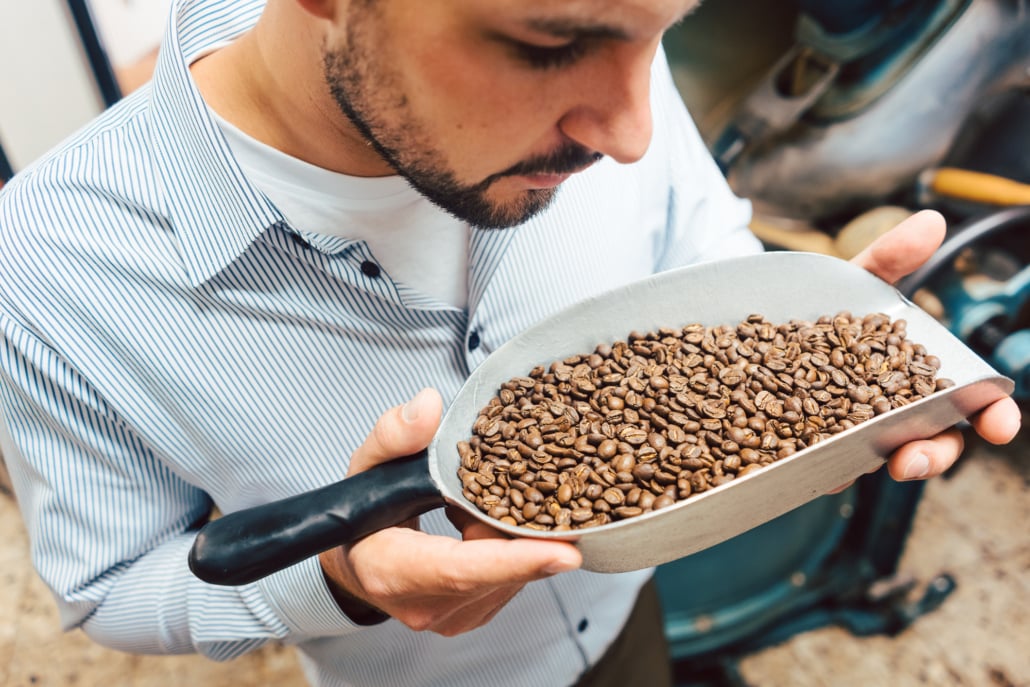
However, the actual roast time and exact length of each coffee roasting stage are also important factors for us to keep in mind.
For example, in case you are roasting rather fast. You will achieve more desired aroma compounds you are aiming for.
But, you will also have to be careful not to burn the beans the same time.
Additionally, the amount of aroma compounds, which are developing during the beginning of the roasting stage, is higher with fast roasting.
However, fast coffee roasting may not always be a good idea.
There are a couple of reasons why fast roasting may be counter-productive for our particularly desired flavor roast profile.
Firstly, some roaster machine designs are just not made for fast roasting. And secondly, if we are looking for any specific coffee’s characteristics that typically require a slower roasting instead.
Generally, fast roasting enhances all of the flavors in your coffee.
However, we may not always want all flavors maybe. Then, we need to adjust the roast profile.
For example, acidity is a commonly desired flavor in coffee. But, this may be different when it comes to espresso. For this coffee drink, people sometimes want low acidity.
If you are roasting slower for instance, the organic acids have more time to break down in coffee. In consequence, our coffee becomes less acidic.
So, in this preferred case for an espresso slow roasting is more practical.
Roaster Machine Designs
Over the years, our coffee industry invented and created a great number of different roaster machine designs.
Why is the individual roaster design important?
Because the specific design affects the thermodynamic qualities of roasting. Therefore, you can make different tasting coffee with different machines.
Small amount roasters typically like to use drum roasters. In there, the beans constantly rotate in a drum. And, it is heated below with either a direct or indirect flame.
This produces a big energy volume in the roast. Additionally, when using drum roasters the quality of your roast result is very stable.
But there is also one thing any roast master would have to keep in mind when using this machine. You need to think ahead up to a few minutes all the time.
Furthermore, drum roasters are ideal for slow roasting. Because, you can better control the temperature in the beginning and not let it rise too high.
If you do it right, your coffee beans will not quickly burn from the outside.
Besides drum roasters, the coffee industry also commonly uses fluidized bed roasters for many years already.
In fluidized bed roasters the machine is indirectly heated by hot air and not a flame.
This makes it easier for us to faster learn and control the roaster machine. Plus, this design allows us to roast faster without burning the bean from outside. And, you can get more aroma to the coffee.
Many times, you can also find some hybrids between fluidized bed roasters and drum roasters. For example, there will be a drum inside. But the heating is done indirectly by hot air.
Filter or Espresso?
What is your plan? Are you coffee roasting for filter or for espresso?
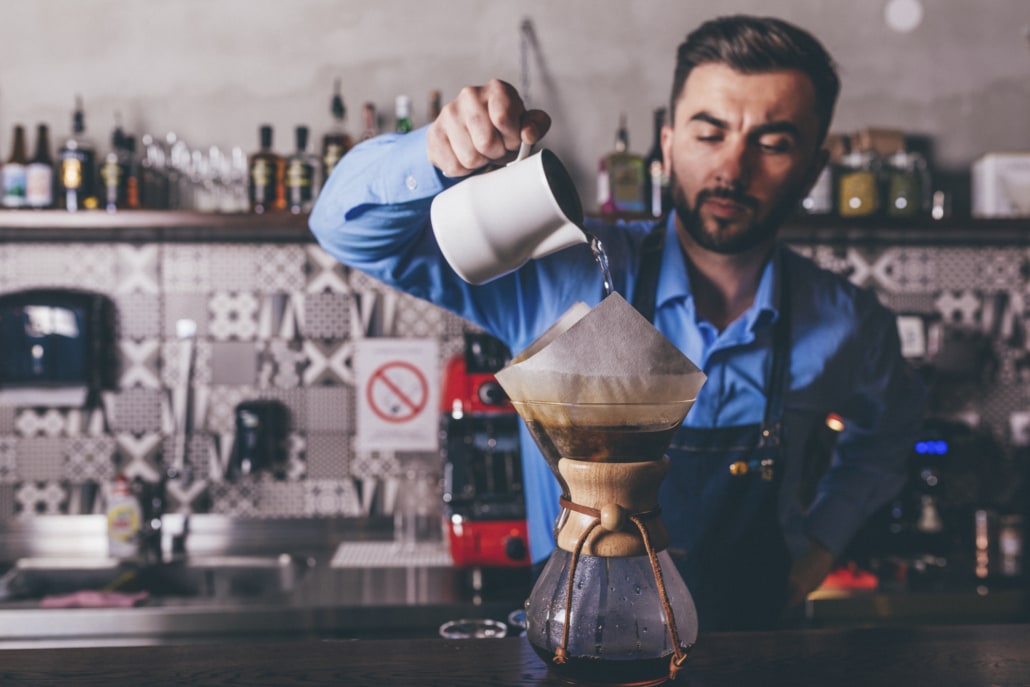
Do you know that there is a difference between filter and espresso coffee?
Typically, when it comes to filter coffee the flavor extraction is more or less ‘naturally’ done by gravity. Overall, you can describe the process for filter coffee as quite gentle.
In addition, you may decide to use very aromatic and acidic coffee for filter.
However, we are usually making an espresso very differently. On average, an espresso shot is extracted with a 9 bar pressure.
As a result, more flavor is extracted into your cup.
Furthermore, some coffee types may be better suited to be roasted for espresso. And, others may perform better when filtering.
Some roast masters will try to aim for the middle way between espresso and filter. Not too light and not too dark, so that the final coffee result is suitable for both.
Traditionally, espresso is dark roasted. And, it is low in acidity and comes with a big body.
For filter coffee, the roast degree of level is usually lighter in comparison.
But anyhow, roast styles have become much more flexible than traditional these days. And, in my opinion, this one of the beautiful things our coffee world can offer us.
Nowadays, there are so some many creative and possible ways to express our own individual coffee preferences and desires.
Today, more and more baristas and coffee lovers all around the world try expand their own experiences.
The Bottom Line – Coffee Roasting
In summary, we can say that the path of coffee roasting is a very fascinating and never-ending journey.
There is always more to learn and to discover about it.
It can become a real obsession for roasters to continuously challenge themselves and try to find out the best possible roast profile. So, that all coffee characteristics can come together in aromatic harmony.
As we mentioned earlier, the factor of solubility plays quite a crucial role in coffee extraction and coffee roasting.
The further you are developing your roast, the more it becomes soluble.
Because, the compounds will break down further. And, this is allowing them to bond with the water molecule more quickly.
Eventually, this leads us to the desired flavor profiles roasters and us are aiming for. Coffee roasting is a whole skill set universe in itself.
And as our coffee world is further and further expanding as we are speaking, the area of coffee roasting does so as well.
Who knows what exciting things will lay ahead of us. And, what we will be able to expect and to enjoy in the years to come.
So, how about you?
What is your opinion about coffee roasting? Are you an active roaster maybe? And, what would be some of your recommendations then?
Is there anything you would like to add to this article?
Feel free to share your coffee experiences with us.
Until then, stay safe, healthy and properly caffeinated.
Cheers!
Related Posts
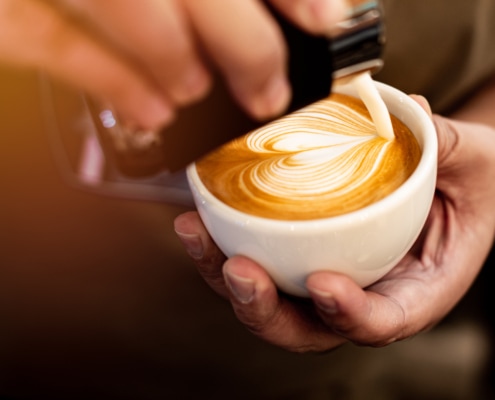 https://www.siamhillscoffee.com/wp-content/uploads/Is-Latte-Art-Good-or-Bad-–-Does-Latte-Art-Make-our-Coffee-Better-or-Worse-–-1.jpg
1412
2122
Siamhillscoffee
https://www.siamhillscoffee.com/wp-content/uploads/coffee-logo.png
Siamhillscoffee2021-04-25 10:57:092021-04-25 11:02:29Is Latte Art Good or Bad? – Does Latte Art Make our Coffee Better or Worse? –
https://www.siamhillscoffee.com/wp-content/uploads/Is-Latte-Art-Good-or-Bad-–-Does-Latte-Art-Make-our-Coffee-Better-or-Worse-–-1.jpg
1412
2122
Siamhillscoffee
https://www.siamhillscoffee.com/wp-content/uploads/coffee-logo.png
Siamhillscoffee2021-04-25 10:57:092021-04-25 11:02:29Is Latte Art Good or Bad? – Does Latte Art Make our Coffee Better or Worse? –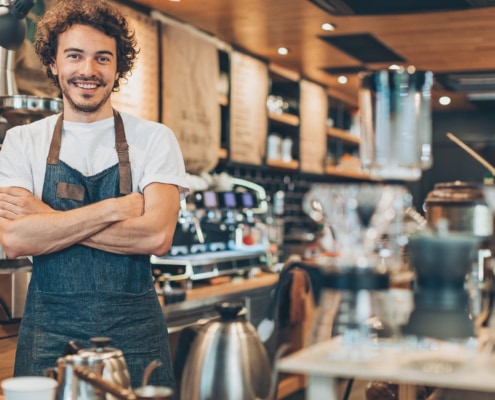 https://www.siamhillscoffee.com/wp-content/uploads/How-To-Open-A-Coffee-Shop-The-Coffee-Shop-Equipment-List-You-Need-1.jpg
1414
2121
Siamhillscoffee
https://www.siamhillscoffee.com/wp-content/uploads/coffee-logo.png
Siamhillscoffee2021-03-21 04:08:192021-03-21 04:08:19How To Open A Coffee Shop – The Coffee Shop Equipment List You Need
https://www.siamhillscoffee.com/wp-content/uploads/How-To-Open-A-Coffee-Shop-The-Coffee-Shop-Equipment-List-You-Need-1.jpg
1414
2121
Siamhillscoffee
https://www.siamhillscoffee.com/wp-content/uploads/coffee-logo.png
Siamhillscoffee2021-03-21 04:08:192021-03-21 04:08:19How To Open A Coffee Shop – The Coffee Shop Equipment List You Need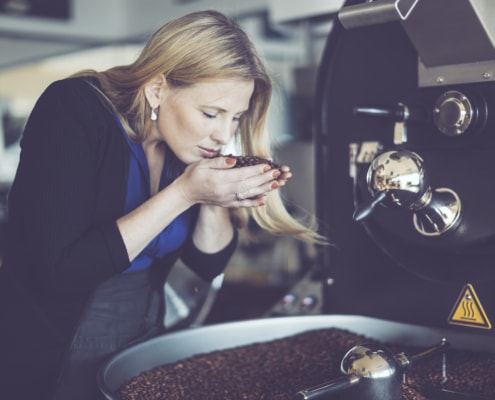 https://www.siamhillscoffee.com/wp-content/uploads/What-is-Coffee-Roasting-–-Everything-You-Need-to-Know-–-1.jpg
1414
2121
Siamhillscoffee
https://www.siamhillscoffee.com/wp-content/uploads/coffee-logo.png
Siamhillscoffee2021-02-20 05:19:592021-03-03 10:49:15What is Coffee Roasting? – Everything You Need to Know –
https://www.siamhillscoffee.com/wp-content/uploads/What-is-Coffee-Roasting-–-Everything-You-Need-to-Know-–-1.jpg
1414
2121
Siamhillscoffee
https://www.siamhillscoffee.com/wp-content/uploads/coffee-logo.png
Siamhillscoffee2021-02-20 05:19:592021-03-03 10:49:15What is Coffee Roasting? – Everything You Need to Know –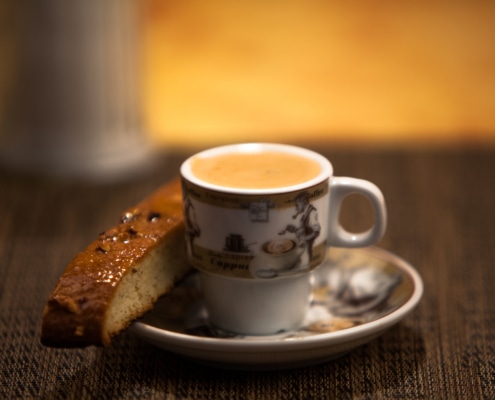 https://www.siamhillscoffee.com/wp-content/uploads/What-is-a-Cafe-Cubano-–-A-Complete-Guide-–-1.jpg
1414
2121
Siamhillscoffee
https://www.siamhillscoffee.com/wp-content/uploads/coffee-logo.png
Siamhillscoffee2021-02-20 04:57:432021-03-03 10:54:47What is a Cafe Cubano – A Complete Guide –
https://www.siamhillscoffee.com/wp-content/uploads/What-is-a-Cafe-Cubano-–-A-Complete-Guide-–-1.jpg
1414
2121
Siamhillscoffee
https://www.siamhillscoffee.com/wp-content/uploads/coffee-logo.png
Siamhillscoffee2021-02-20 04:57:432021-03-03 10:54:47What is a Cafe Cubano – A Complete Guide –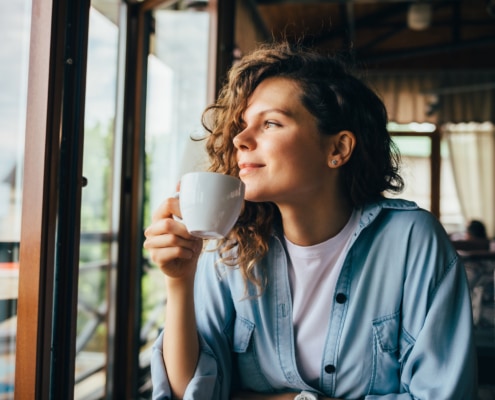 https://www.siamhillscoffee.com/wp-content/uploads/Make-Your-Coffee-Healthy-–-Best-10-Ways-For-A-Better-Coffee-Experience-–-1.jpg
1414
2121
Siamhillscoffee
https://www.siamhillscoffee.com/wp-content/uploads/coffee-logo.png
Siamhillscoffee2021-02-12 08:13:182021-03-03 10:57:16Make Your Coffee Healthy – Best 10 Ways For A Better Coffee Experience –
https://www.siamhillscoffee.com/wp-content/uploads/Make-Your-Coffee-Healthy-–-Best-10-Ways-For-A-Better-Coffee-Experience-–-1.jpg
1414
2121
Siamhillscoffee
https://www.siamhillscoffee.com/wp-content/uploads/coffee-logo.png
Siamhillscoffee2021-02-12 08:13:182021-03-03 10:57:16Make Your Coffee Healthy – Best 10 Ways For A Better Coffee Experience –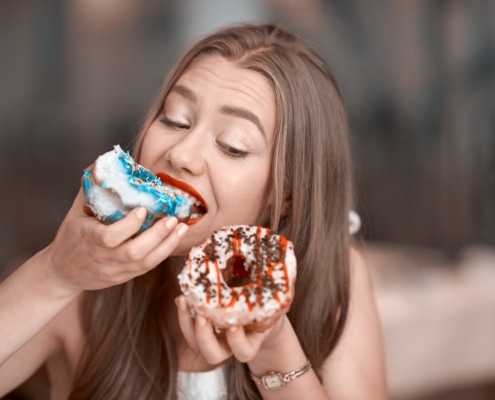 https://www.siamhillscoffee.com/wp-content/uploads/10-Best-Ways-to-Eat-Less-Sugar-–-How-to-Cut-Down-on-Sugar-–-1-scaled.jpg
1709
2560
Siamhillscoffee
https://www.siamhillscoffee.com/wp-content/uploads/coffee-logo.png
Siamhillscoffee2021-02-12 08:07:142021-03-03 10:58:4810 Best Ways to Eat Less Sugar – How to Cut Down on Sugar –
https://www.siamhillscoffee.com/wp-content/uploads/10-Best-Ways-to-Eat-Less-Sugar-–-How-to-Cut-Down-on-Sugar-–-1-scaled.jpg
1709
2560
Siamhillscoffee
https://www.siamhillscoffee.com/wp-content/uploads/coffee-logo.png
Siamhillscoffee2021-02-12 08:07:142021-03-03 10:58:4810 Best Ways to Eat Less Sugar – How to Cut Down on Sugar –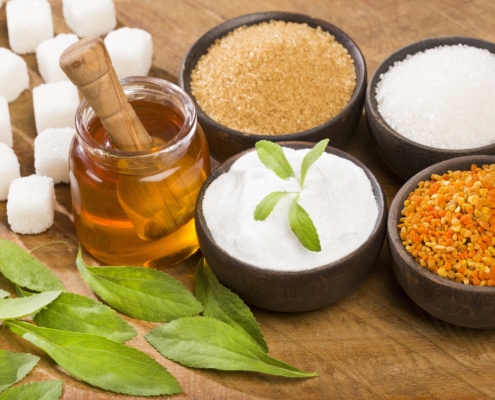 https://www.siamhillscoffee.com/wp-content/uploads/10-Best-Natural-Sugar-Substitutes-–-Your-Healthier-Sugar-Alternatives-to-Try-–-1-scaled.jpg
1707
2560
Siamhillscoffee
https://www.siamhillscoffee.com/wp-content/uploads/coffee-logo.png
Siamhillscoffee2021-02-12 07:32:372021-03-03 11:08:1810 Best Natural Sugar Substitutes – Your Healthier Sugar Alternatives to Try –
https://www.siamhillscoffee.com/wp-content/uploads/10-Best-Natural-Sugar-Substitutes-–-Your-Healthier-Sugar-Alternatives-to-Try-–-1-scaled.jpg
1707
2560
Siamhillscoffee
https://www.siamhillscoffee.com/wp-content/uploads/coffee-logo.png
Siamhillscoffee2021-02-12 07:32:372021-03-03 11:08:1810 Best Natural Sugar Substitutes – Your Healthier Sugar Alternatives to Try – https://www.siamhillscoffee.com/wp-content/uploads/20-Best-Ground-Coffee-Recipes-9.jpg
896
640
Siamhillscoffee
https://www.siamhillscoffee.com/wp-content/uploads/coffee-logo.png
Siamhillscoffee2021-02-12 07:10:502021-03-03 11:14:2220 Best Ground Coffee Recipes – Make Delicious Food With Coffee –
https://www.siamhillscoffee.com/wp-content/uploads/20-Best-Ground-Coffee-Recipes-9.jpg
896
640
Siamhillscoffee
https://www.siamhillscoffee.com/wp-content/uploads/coffee-logo.png
Siamhillscoffee2021-02-12 07:10:502021-03-03 11:14:2220 Best Ground Coffee Recipes – Make Delicious Food With Coffee –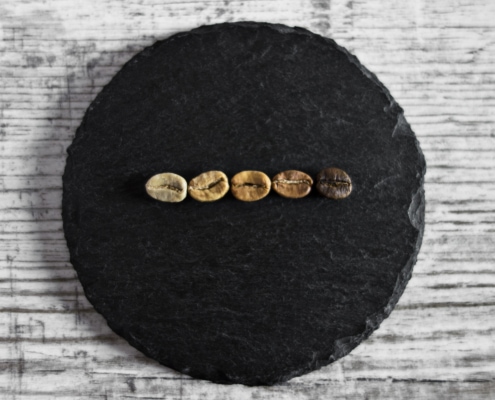 https://www.siamhillscoffee.com/wp-content/uploads/Coffee-Roast-Levels-1-scaled.jpg
1707
2560
Siamhillscoffee
https://www.siamhillscoffee.com/wp-content/uploads/coffee-logo.png
Siamhillscoffee2021-02-12 06:58:112021-03-03 11:44:54Coffee Roast Levels – The Differences Between Light, Medium and Dark Roasts –
https://www.siamhillscoffee.com/wp-content/uploads/Coffee-Roast-Levels-1-scaled.jpg
1707
2560
Siamhillscoffee
https://www.siamhillscoffee.com/wp-content/uploads/coffee-logo.png
Siamhillscoffee2021-02-12 06:58:112021-03-03 11:44:54Coffee Roast Levels – The Differences Between Light, Medium and Dark Roasts –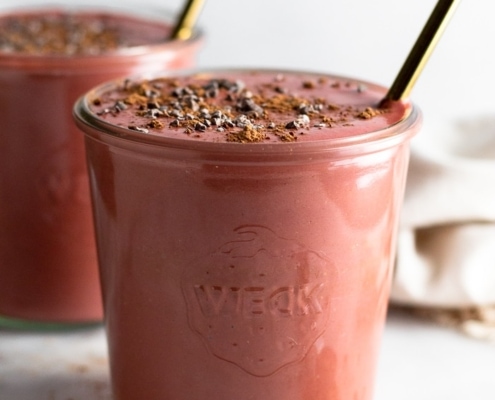 https://www.siamhillscoffee.com/wp-content/uploads/15-Great-Coffee-Breakfast-Smoothies-–-Simply-Delicious-Ways-to-Boost-Your-Morning-–14.jpg
1050
700
Siamhillscoffee
https://www.siamhillscoffee.com/wp-content/uploads/coffee-logo.png
Siamhillscoffee2021-02-12 06:52:492021-03-03 11:46:4615 Great Coffee Breakfast Smoothies – Delicious Ways to Boost Your Morning –
https://www.siamhillscoffee.com/wp-content/uploads/15-Great-Coffee-Breakfast-Smoothies-–-Simply-Delicious-Ways-to-Boost-Your-Morning-–14.jpg
1050
700
Siamhillscoffee
https://www.siamhillscoffee.com/wp-content/uploads/coffee-logo.png
Siamhillscoffee2021-02-12 06:52:492021-03-03 11:46:4615 Great Coffee Breakfast Smoothies – Delicious Ways to Boost Your Morning –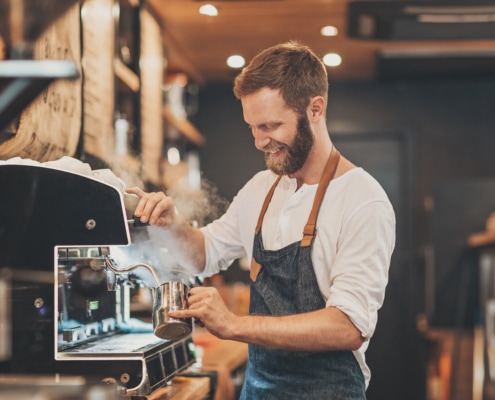 https://www.siamhillscoffee.com/wp-content/uploads/What-is-a-Barista-–-How-to-Professionally-Make-Coffee-–-1-scaled.jpg
1707
2560
Siamhillscoffee
https://www.siamhillscoffee.com/wp-content/uploads/coffee-logo.png
Siamhillscoffee2021-02-12 05:15:182021-03-03 12:02:08What is a Barista? – How to Professionally Make Coffee –
https://www.siamhillscoffee.com/wp-content/uploads/What-is-a-Barista-–-How-to-Professionally-Make-Coffee-–-1-scaled.jpg
1707
2560
Siamhillscoffee
https://www.siamhillscoffee.com/wp-content/uploads/coffee-logo.png
Siamhillscoffee2021-02-12 05:15:182021-03-03 12:02:08What is a Barista? – How to Professionally Make Coffee –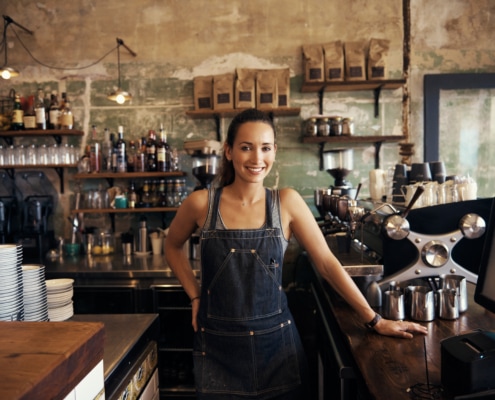 https://www.siamhillscoffee.com/wp-content/uploads/How-To-Open-A-Coffee-Shop-The-10-Most-Important-Steps-1-scaled.jpg
1708
2560
Siamhillscoffee
https://www.siamhillscoffee.com/wp-content/uploads/coffee-logo.png
Siamhillscoffee2021-02-12 04:37:232021-03-03 12:10:33How To Open A Coffee Shop – The 10 Most Important Steps
https://www.siamhillscoffee.com/wp-content/uploads/How-To-Open-A-Coffee-Shop-The-10-Most-Important-Steps-1-scaled.jpg
1708
2560
Siamhillscoffee
https://www.siamhillscoffee.com/wp-content/uploads/coffee-logo.png
Siamhillscoffee2021-02-12 04:37:232021-03-03 12:10:33How To Open A Coffee Shop – The 10 Most Important Steps https://www.siamhillscoffee.com/wp-content/uploads/How-To-Sell-Coffee-Online-–-Open-Your-Own-Online-Coffee-Shop-1-scaled.jpg
1697
2560
Siamhillscoffee
https://www.siamhillscoffee.com/wp-content/uploads/coffee-logo.png
Siamhillscoffee2021-02-12 04:32:292021-03-03 12:12:06How To Sell Coffee Online – Open Your Own Online Coffee Shop
https://www.siamhillscoffee.com/wp-content/uploads/How-To-Sell-Coffee-Online-–-Open-Your-Own-Online-Coffee-Shop-1-scaled.jpg
1697
2560
Siamhillscoffee
https://www.siamhillscoffee.com/wp-content/uploads/coffee-logo.png
Siamhillscoffee2021-02-12 04:32:292021-03-03 12:12:06How To Sell Coffee Online – Open Your Own Online Coffee Shop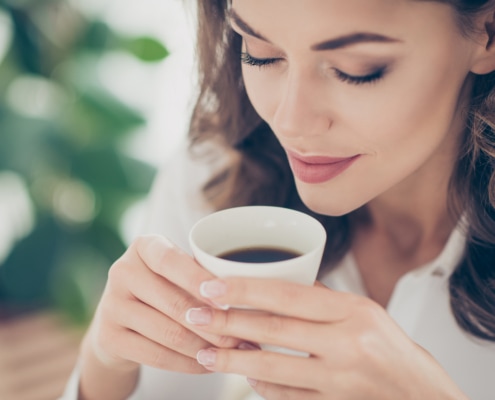 https://www.siamhillscoffee.com/wp-content/uploads/Make-Your-Coffee-Better-–-6-Fun-Ways-to-Boost-Your-Coffee-–-1-scaled.jpg
1709
2560
Siamhillscoffee
https://www.siamhillscoffee.com/wp-content/uploads/coffee-logo.png
Siamhillscoffee2021-02-12 03:45:112021-03-03 12:29:07Make Your Coffee Better – 6 Fun Ways to Boost Your Coffee –
https://www.siamhillscoffee.com/wp-content/uploads/Make-Your-Coffee-Better-–-6-Fun-Ways-to-Boost-Your-Coffee-–-1-scaled.jpg
1709
2560
Siamhillscoffee
https://www.siamhillscoffee.com/wp-content/uploads/coffee-logo.png
Siamhillscoffee2021-02-12 03:45:112021-03-03 12:29:07Make Your Coffee Better – 6 Fun Ways to Boost Your Coffee –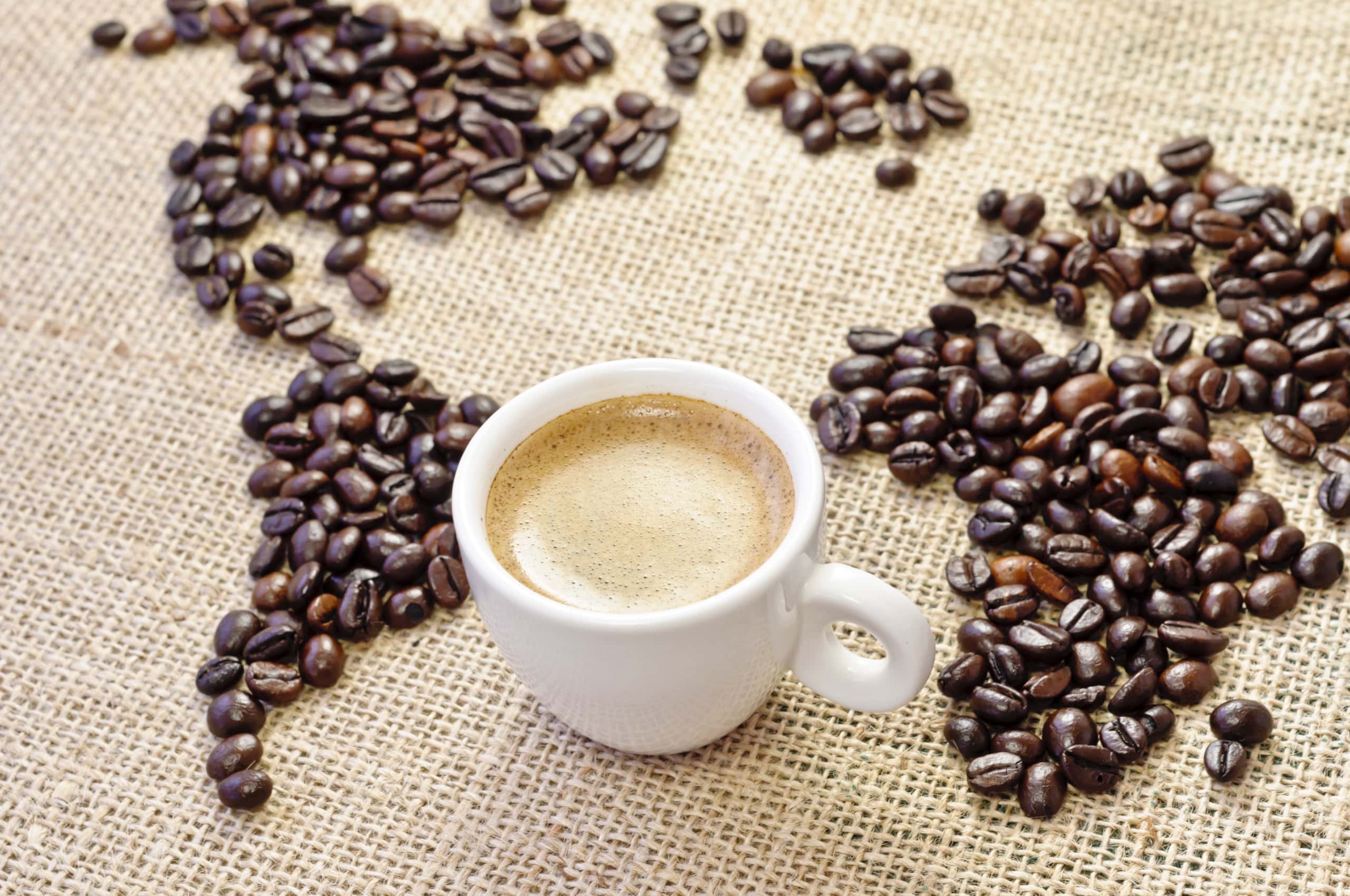 https://www.siamhillscoffee.com/wp-content/uploads/A-Coffee-Journey-–-10-Steps-From-the-Seed-to-Your-Cup-–-1-scaled.jpg
1700
2560
Siamhillscoffee
https://www.siamhillscoffee.com/wp-content/uploads/coffee-logo.png
Siamhillscoffee2021-02-12 02:31:102021-02-20 14:09:30A Coffee Journey – 10 Steps From the Seed to Your Cup –
https://www.siamhillscoffee.com/wp-content/uploads/A-Coffee-Journey-–-10-Steps-From-the-Seed-to-Your-Cup-–-1-scaled.jpg
1700
2560
Siamhillscoffee
https://www.siamhillscoffee.com/wp-content/uploads/coffee-logo.png
Siamhillscoffee2021-02-12 02:31:102021-02-20 14:09:30A Coffee Journey – 10 Steps From the Seed to Your Cup –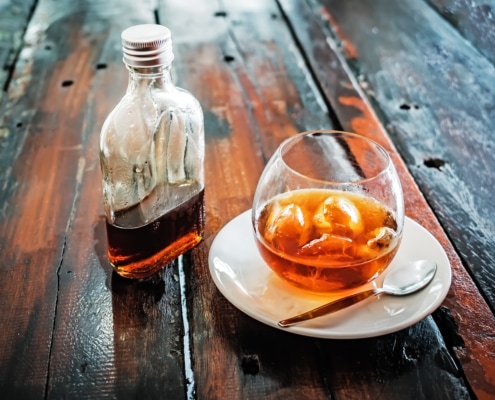 https://www.siamhillscoffee.com/wp-content/uploads/Cold_Brew_Coffee_An_Honest_Opinion_All_You_Need_To_Know_1.jpg
3144
4608
Siamhillscoffee
https://www.siamhillscoffee.com/wp-content/uploads/coffee-logo.png
Siamhillscoffee2019-11-06 05:01:152021-03-03 13:30:17Cold Brew Coffee – An Honest Opinion – All You Need to Know
https://www.siamhillscoffee.com/wp-content/uploads/Cold_Brew_Coffee_An_Honest_Opinion_All_You_Need_To_Know_1.jpg
3144
4608
Siamhillscoffee
https://www.siamhillscoffee.com/wp-content/uploads/coffee-logo.png
Siamhillscoffee2019-11-06 05:01:152021-03-03 13:30:17Cold Brew Coffee – An Honest Opinion – All You Need to Know
